- Aubergine: Growing from Seeds
- 1. Choosing the right seeds
- 2. Starting seeds indoors
- 3. Transplanting seedlings
- 4. Providing proper care
- 5. Harvesting
- Growing Aubergine Plants from Seeds
- 1. Choose the right seeds
- 2. Start seeds indoors
- 3. Provide adequate light
- 4. Transplant seedlings
- 5. Water and fertilize regularly
- 6. Provide support
- 7. Watch for pests and diseases
- 8. Harvest and enjoy
- Choosing the Right Seeds
- Variety
- Seed Quality
- Organic or Hybrid
- Climate Adaptability
- Aubergine Seeds Suppliers
- Conclusion
- Aubergine: Vegetable garden
- 1. Site Selection:
- 2. Soil Preparation:
- 3. Planting:
- 4. Watering:
- 5. Fertilizing:
- 6. Pest and Disease Control:
- 7. Harvesting:
- Preparing the Vegetable Garden for Aubergines
- 1. Choose the right location
- 2. Clear the area
- 3. Improve the soil
- 4. Create raised beds or mounds
- 5. Space the plants properly
- 6. Mulch the soil
- 7. Provide support
- 8. Water regularly
- 9. Monitor for pests and diseases
- Planting Aubergine Seeds in the Vegetable Garden
- Step 1: Selecting the Seeds
- Step 2: Preparing the Seedbed
- Step 3: Planting the Seeds
- Step 4: Caring for the Seedlings
- Step 5: Transplanting
- Step 6: Maintenance and Harvest
- Aubergine: The Green Thumb
- Choosing the Right Seeds
- Planting and Germination
- Care and Maintenance
- Harvesting
- Conclusion
- Caring for Aubergine Plants
- Watering
- Fertilizing
- Pruning
- Support
- Weed Control
- Pest and Disease Control
- Harvesting
- Harvesting and Storing Aubergines
- 1. Checking for Ripeness
- 2. Harvesting Technique
- 3. Post-Harvest Handling
- 4. Storing Aubergines
- 5. Using Ripe Aubergines
- “Question-Answer”
- How long does it take for aubergine seeds to germinate?
- What is the best time to plant aubergine seeds?
- Can aubergine plants withstand frost?
- How often should I water aubergine plants?
- Do aubergine plants require full sun?
- How tall do aubergine plants usually grow?
- “Video” Summer Dahlia Garden
Are you a fan of delicious and nutritious vegetables? If so, then growing your own aubergines in the vegetable garden might be the perfect project for you. Whether you’re a seasoned gardener or just starting out with your green thumb, growing aubergines from seeds can be a rewarding and satisfying experience.
Aubergines, also known as eggplants, are a versatile vegetable that can be used in a variety of dishes. They come in different shapes, sizes, and colors, from small and round to long and slender, and from purple to white. The flesh of the aubergine is creamy and slightly bitter, making it a great addition to stir-fries, curries, and even grilled dishes.
To start growing your own aubergines, it’s best to begin with seeds. You can find a variety of aubergine seeds at your local garden center or order them online. It’s important to choose seeds that are suited to your region and climate, as aubergines thrive in warm and sunny conditions.
Once you have your seeds, you can start them indoors in pots or trays filled with potting soil. Plant the seeds about a quarter-inch deep and water them regularly to keep the soil moist. After a few weeks, you’ll start to see seedlings sprouting, and it’s important to thin them out to give each plant enough space to grow.
Tip: It’s best to start your aubergine seeds indoors about 8-10 weeks before the last expected frost date in your area.
Once the seedlings are a few inches tall and the danger of frost has passed, you can transplant them into your vegetable garden. Choose a sunny spot with well-draining soil and space the plants about two feet apart. Water the plants regularly, keeping the soil evenly moist but not waterlogged.
As your aubergine plants grow, you can provide support by staking or caging them to keep the branches upright and prevent them from breaking under the weight of the fruit. You can also mulch around the plants to suppress weeds and conserve moisture in the soil.
With proper care and attention, your aubergines will start to produce beautiful purple or white fruits in about 12-16 weeks. Harvest them when they are firm and shiny, but before they become too mature and develop a bitter taste.
So why not give it a try? Growing aubergines from seeds in your vegetable garden can be a fun and rewarding experience that will provide you with delicious and healthy vegetables all summer long.
Aubergine: Growing from Seeds
Growing aubergine (also known as eggplant) from seeds can be a rewarding experience. This vegetable thrives in warm climates and is a popular choice for many gardeners. Here are the steps to successfully grow aubergine from seeds:
1. Choosing the right seeds
When selecting aubergine seeds, it is important to choose high-quality seeds from a reputable supplier. Look for seeds that are recommended for your specific climate and growing conditions.
2. Starting seeds indoors
Aubergine seeds need to be started indoors before the last frost date in your area. Fill a seed tray or small pots with a well-draining potting mix. Plant the seeds about ¼ inch deep and water the soil lightly. Place the tray or pots in a warm location, such as near a sunny window or under grow lights.
3. Transplanting seedlings
Once the seedlings have grown to about 2 inches tall and have developed several sets of leaves, they are ready to be transplanted into larger pots or the garden. Choose a location in your garden that receives full sunlight and has well-drained soil. Space the seedlings about 2-3 feet apart to allow for adequate growth.
4. Providing proper care
Aubergines require regular watering to keep the soil evenly moist, especially during dry periods. Avoid overwatering, as this can lead to root rot. Fertilize the plants every 2-3 weeks with a balanced fertilizer to promote healthy growth. Mulching around the base of the plants can help retain moisture and suppress weeds.
5. Harvesting
Aubergines are ready to be harvested when they reach full size and have a glossy appearance. To harvest, simply cut the eggplant stem with a sharp knife or shears. It is best to harvest the fruits when they are still slightly firm and before they become overripe.
By following these steps, you can successfully grow aubergine from seeds and enjoy a bountiful harvest of this delicious vegetable.
Growing Aubergine Plants from Seeds
Are you interested in growing your own aubergines? With the right care and attention, you can start your own aubergine plants from seeds and enjoy a bountiful harvest of these delicious vegetables.
1. Choose the right seeds
Start by choosing high-quality aubergine seeds from a reputable supplier. Look for varieties that are well-suited to your climate and growing conditions. Some popular varieties include ‘Black Beauty’, ‘Classic’, and ‘Ping Tung’.
2. Start seeds indoors
Aubergine seeds require warm temperatures to germinate, so it is best to start them indoors. Fill a seed tray or small pots with a good-quality seed starting mix. Plant the seeds about 1/4 inch deep and keep the soil consistently moist.
3. Provide adequate light
Aubergine plants require at least 6-8 hours of direct sunlight each day. If you are growing them indoors, place them near a sunny window or use artificial grow lights to provide sufficient light.
4. Transplant seedlings
Once the seedlings have developed two sets of true leaves, it is time to transplant them into larger pots or into the garden. Choose a well-draining spot in your vegetable garden with rich, fertile soil.
5. Water and fertilize regularly
Keep the soil evenly moist throughout the growing season, especially during hot and dry periods. Water the plants at the base to avoid wetting the leaves, which can lead to disease. Fertilize the plants every 2-3 weeks with a balanced vegetable fertilizer according to the package instructions.
6. Provide support
Aubergine plants tend to have large, heavy fruit that can weigh down the branches. To prevent the branches from breaking, provide support in the form of stakes or cages. This will also help improve air circulation and minimize the risk of diseases.
7. Watch for pests and diseases
Monitor your aubergine plants regularly for common pests such as aphids, whiteflies, and flea beetles. Use organic pest control methods, such as handpicking or spraying with a mixture of water and soap, to keep these pests at bay. Also, watch out for common diseases such as powdery mildew or bacterial wilt and take appropriate measures to prevent or treat them.
8. Harvest and enjoy
Aubergines are ready to harvest when they have reached their full size and have a glossy, firm skin. Use a sharp knife or shears to cut the fruit from the stem. Enjoy them fresh or use them in your favorite recipes!
By following these steps, you can successfully grow aubergine plants from seeds and enjoy a delicious and rewarding harvest of these versatile vegetables.
Choosing the Right Seeds
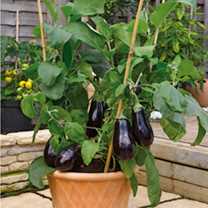
When it comes to growing aubergines from seeds, choosing the right seeds is crucial for a successful harvest. Here are some factors to consider when selecting aubergine seeds:
Variety
There are numerous varieties of aubergines available, each with its own unique characteristics. Some varieties are better suited for growing in certain climates or conditions, while others may have specific traits such as disease resistance or high yields. Decide what characteristics are most important to you and choose a variety that fits your needs.
Seed Quality
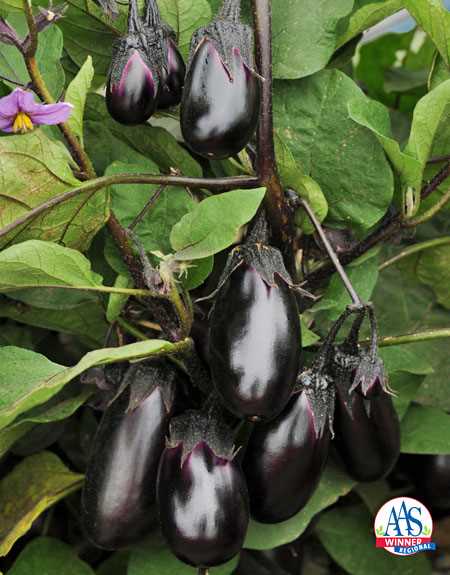
The quality of the seeds you choose is important for germination and overall plant health. Look for seeds from reputable suppliers that specialize in vegetable seeds. Check for a high germination rate, which indicates that a larger percentage of seeds are likely to sprout. Avoid purchasing old or expired seeds, as they may have a lower germination rate.
Organic or Hybrid

You can choose between organic or hybrid aubergine seeds. Organic seeds are produced from plants grown without the use of synthetic pesticides or fertilizers. Hybrid seeds are created by cross-breeding different varieties to produce desired traits such as disease resistance or improved yield. Consider your preferences and gardening practices when deciding between organic or hybrid seeds.
Climate Adaptability
Some aubergine varieties are better suited for specific climates. Check the seed packet or consult with a local gardening expert to determine the best varieties for your growing zone. Factors such as temperature, humidity, and sunlight can significantly impact the growth and fruiting of aubergine plants.
Aubergine Seeds Suppliers
There are several reputable suppliers of aubergine seeds that offer a wide selection of varieties. Some popular suppliers include:
- Seed Savers Exchange
- Johnny’s Selected Seeds
- Park Seed
- Burpee
Conclusion
Choosing the right seeds is a crucial step in the aubergine growing process. Consider the variety, seed quality, organic or hybrid options, climate adaptability, and reputable suppliers when selecting aubergine seeds. By making informed choices, you can increase your chances of a successful harvest and enjoy delicious homegrown aubergines.
Aubergine: Vegetable garden
Aubergine, also known as eggplant, is a popular vegetable to grow in vegetable gardens. It is a warm-season crop that requires a long growing season to produce a bountiful harvest. Here are some tips for successfully growing aubergine in your vegetable garden:
1. Site Selection:
Choose a sunny location in your garden for growing aubergine. It needs at least 6-8 hours of direct sunlight daily for optimal growth and fruit production. Ensure that the soil is well-drained and rich in organic matter.
2. Soil Preparation:
Before planting aubergine seeds or seedlings, prepare the soil by loosening it with a garden fork or tiller. Incorporate compost or well-rotted manure to improve soil fertility and drainage. Remove any weeds or debris from the planting area.
3. Planting:
Sow aubergine seeds indoors 8-10 weeks before the last frost date in your area. Plant the seeds in small pots or seed trays filled with seed-starting mix. Maintain a temperature of around 25°C (77°F) for successful germination. Transplant the seedlings outdoors after the danger of frost has passed and the soil has warmed up.
4. Watering:
Aubergine plants need consistent moisture throughout the growing season. Water deeply and evenly, making sure that the soil is always slightly moist but not waterlogged. Mulching around the plants can help retain moisture and suppress weeds.
5. Fertilizing:
Apply a balanced fertilizer before planting and continue to fertilize every 3-4 weeks during the growing season. Use a fertilizer high in phosphorus to promote flowering and fruiting. Follow the package instructions for application rates.
6. Pest and Disease Control:
Monitor your aubergine plants regularly for signs of pests such as aphids, flea beetles, and tomato hornworms. Use organic pest control methods like handpicking, insecticidal soap, or neem oil to manage pest infestations. Rotate your crops annually to prevent soil-borne diseases.
7. Harvesting:
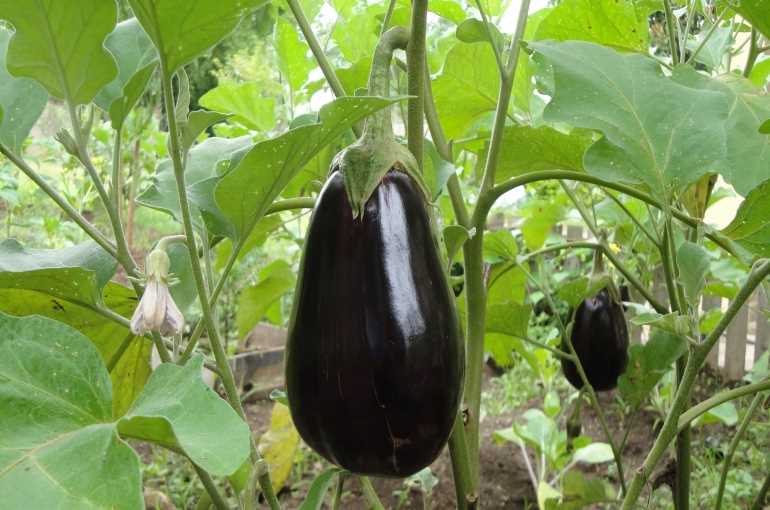
Aubergines can be harvested when the fruit is firm and glossy. Use a knife or shears to cut the fruit from the plant, leaving a short stem attached. Avoid overripe aubergines, as they may have a bitter taste. Harvest regularly to encourage continuous fruit production.
By following these tips, you can successfully grow aubergine in your vegetable garden and enjoy its delicious fruits throughout the season!
Preparing the Vegetable Garden for Aubergines
Before planting aubergines in your vegetable garden, it’s important to prepare the soil and the area where they will be grown. Here are some steps to follow to ensure a successful and healthy crop.
1. Choose the right location
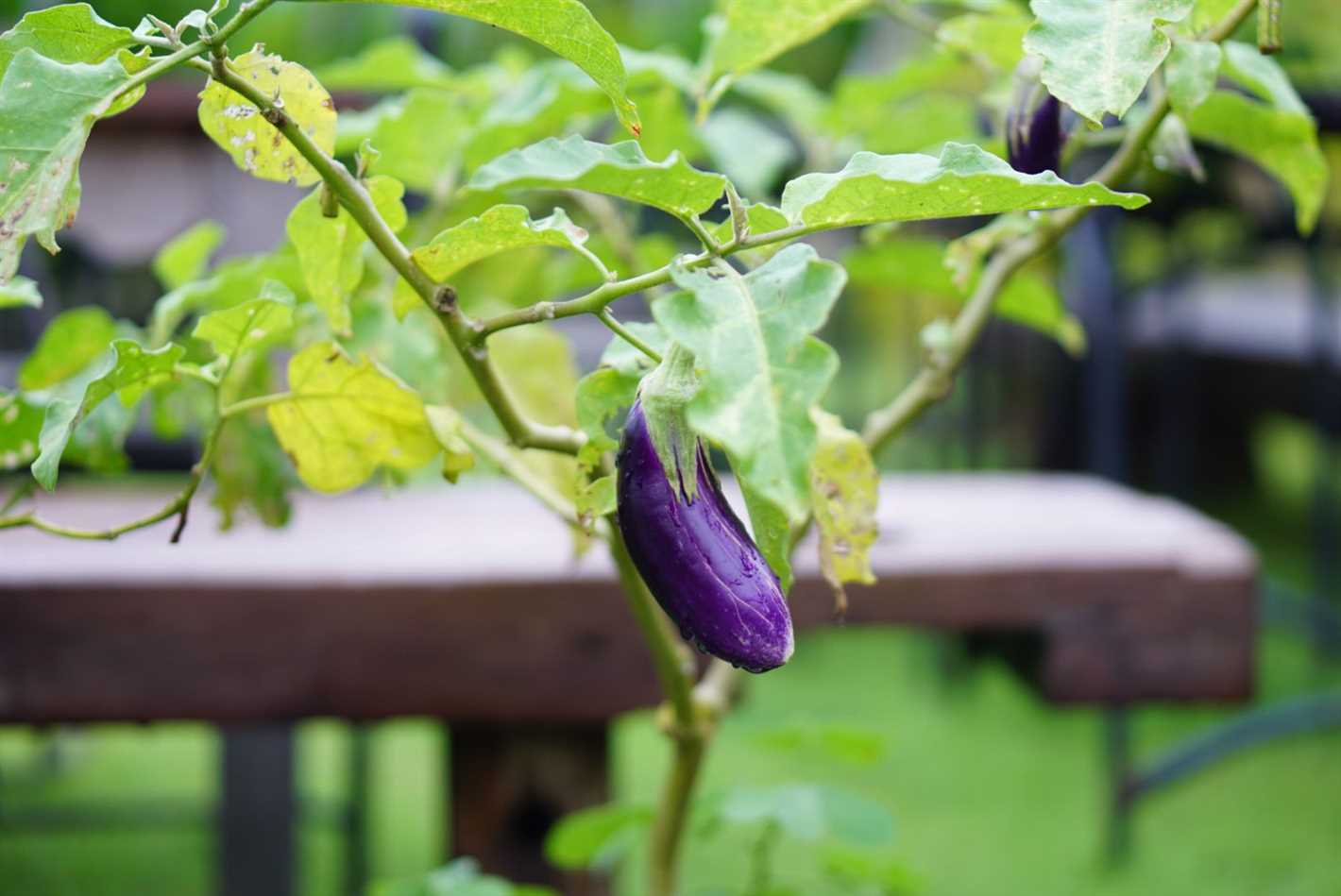
Aubergines thrive in full sun, so choose a spot in your garden that receives at least 6-8 hours of direct sunlight per day. Avoid areas that are shaded by trees or buildings, as the lack of sunlight can hinder growth and fruit production.
2. Clear the area
Remove any existing weeds or grass from the planting area. Use a garden fork or a hoe to loosen the soil and remove any rocks or debris that may be present.
3. Improve the soil
Aubergines prefer well-drained soil that is rich in organic matter. Add compost or well-rotted manure to the soil to improve its fertility and drainage. You can also incorporate a balanced fertilizer into the soil to provide essential nutrients for the plants.
4. Create raised beds or mounds
Creating raised beds or mounds can help improve drainage and prevent waterlogging, which can be detrimental to aubergine plants. If your soil tends to retain water, consider raising the planting area by creating mounds or raised beds.
5. Space the plants properly
When planting aubergines, make sure to space them properly to allow for good air circulation and to prevent the spread of diseases. Typically, a spacing of 2-3 feet between plants is recommended.
6. Mulch the soil
After planting the aubergines, apply a layer of organic mulch, such as straw or wood chips, around the plants. This will help conserve moisture, suppress weed growth, and regulate soil temperature.
7. Provide support
Some varieties of aubergines benefit from additional support as they grow. Install stakes or cages around the plants to prevent them from sprawling on the ground and to support the weight of the fruit.
8. Water regularly
Aubergines require regular watering, especially during dry periods. Keep the soil evenly moist, but avoid overwatering, as this can lead to root rot. Water at the base of the plants to prevent fungal diseases.
9. Monitor for pests and diseases
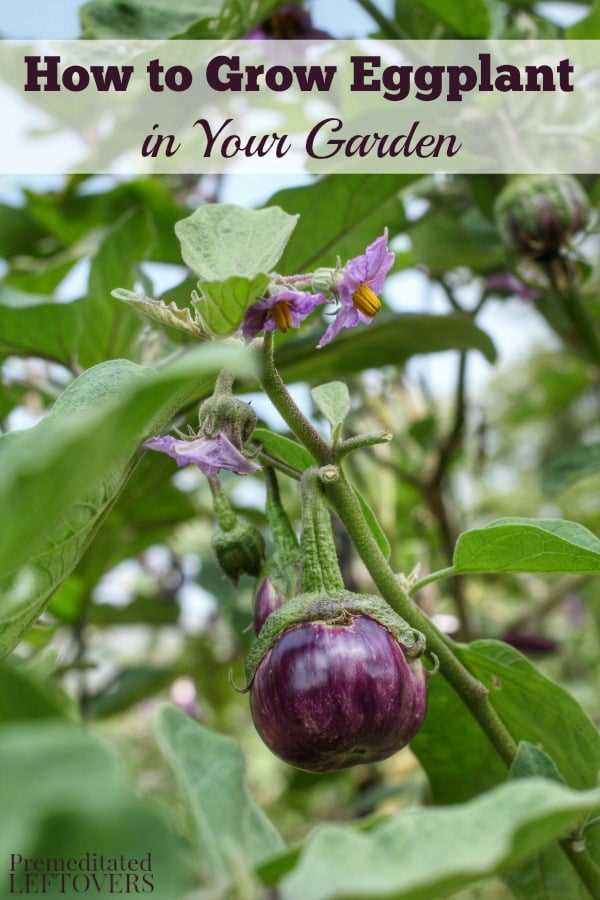
Keep an eye out for common pests and diseases that can affect aubergines, such as aphids, flea beetles, and fungal diseases. Inspect the plants regularly and take appropriate measures, such as using organic insecticides or fungicides, to prevent or control the issues.
By following these steps, you can prepare your vegetable garden for a successful aubergine crop and enjoy a bountiful harvest of delicious, homegrown eggplants.
Planting Aubergine Seeds in the Vegetable Garden
Planting aubergine seeds in the vegetable garden is an exciting process that can result in a bountiful harvest of this delicious and versatile vegetable. Follow these steps to successfully plant aubergine seeds and enjoy the fruits of your labor.
Step 1: Selecting the Seeds
Before planting aubergine seeds, it is important to choose high-quality seeds from a reputable source. Look for seeds that are specifically bred for your climate and growing conditions.
Tip: It is recommended to start with healthy transplants rather than planting seeds directly in the garden, as aubergine seeds can be challenging to germinate.
Step 2: Preparing the Seedbed
Prepare the seedbed by loosening the soil with a garden fork or tiller. Remove any weeds or debris, and ensure the soil is well-draining. Add organic matter, such as compost or well-rotted manure, to improve the soil fertility and structure.
Step 3: Planting the Seeds
- Sow the aubergine seeds in rows or individual holes, spaced according to the recommended planting distance for your specific variety.
- Plant the seeds at a depth of approximately ¼ to ½ inch, and cover them lightly with soil.
- Water the newly planted seeds gently to ensure that the soil is evenly moist but not waterlogged.
Step 4: Caring for the Seedlings
Once the seedlings emerge, provide them with adequate sunlight, water, and nutrients. Keep the soil consistently moist, but be careful not to overwater, as this can lead to root rot and other issues.
Tip: Protect the young seedlings from frost or cold temperatures by covering them with a cloche or using row covers.
Step 5: Transplanting
When the seedlings have grown to a height of 4-6 inches and have at least 2-3 sets of true leaves, they are ready to be transplanted into the main vegetable garden.
Dig a hole that is slightly larger than the root ball of the seedling, and gently place the seedling into the hole, ensuring that it is at the same depth as it was in its original container.
Water the transplanted seedlings thoroughly and continue to provide them with care as they mature.
Step 6: Maintenance and Harvest
As your aubergine plants continue to grow, monitor them for any signs of pests or diseases. Practice regular maintenance tasks, such as pruning, staking, and fertilizing as needed.
Harvest the aubergines once they reach the desired size and color, typically when they are firm and glossy. Use a sharp knife or pruners to cut the fruits from the plant, taking care not to damage the stem or other parts of the plant.
Tip: Harvest the aubergines regularly to encourage new fruit production and prevent the plants from becoming overcrowded.
By following these steps, you can successfully plant aubergine seeds in your vegetable garden and enjoy a fresh and delicious harvest of this versatile vegetable.
Aubergine: The Green Thumb
Aubergines, also known as eggplants, are a popular vegetable in many cuisines around the world. Growing aubergines from seeds in your vegetable garden can be a rewarding and satisfying experience. With a little knowledge and some green thumbs, you can enjoy homegrown aubergines in no time!
Choosing the Right Seeds
When selecting aubergine seeds for your vegetable garden, it is important to choose varieties that are suitable for your climate and growing conditions. Look for seeds that are well adapted to your region and have a good track record of success. You can find a wide variety of aubergine seeds in gardening stores or online.
Planting and Germination
Aubergine seeds should be started indoors about 8-10 weeks before the last frost date in your area. Fill small pots with seed starting mix and plant one seed per pot. Cover the seeds with a thin layer of soil and water gently. Place the pots in a warm location with plenty of sunlight.
Keep the soil moist but not soggy, and within a couple of weeks, you should start to see the seeds germinate. Once the seedlings have developed their first set of true leaves, they can be transplanted into larger pots or directly into your vegetable garden.
Care and Maintenance
Aubergines thrive in warm and sunny locations, so make sure to choose a spot in your vegetable garden that receives at least 6-8 hours of direct sunlight per day. The soil should be fertile, well-drained, and rich in organic matter.
Water your aubergine plants regularly, aiming to keep the soil evenly moist. Avoid overwatering, as this can lead to root rot. Mulching can be beneficial to retain moisture and suppress weeds.
As your aubergine plants grow, provide support by staking or using cages to prevent them from falling over. Pinch off any side shoots that develop to encourage upward growth.
Harvesting
Aubergines are ready to harvest when they reach a glossy, deep purple color and feel firm to the touch. Use a sharp knife or pruners to cut the fruit from the plant, leaving a small portion of the stem attached. Harvesting regularly helps promote further fruit production.
Conclusion
Growing aubergines from seeds can be a satisfying and rewarding experience for any gardener. With proper care and maintenance, you can enjoy a bountiful harvest of this delicious and versatile vegetable in your own vegetable garden. So why not give it a try and let your green thumb shine!
Caring for Aubergine Plants
Watering
Aubergine plants require regular watering to keep them healthy and productive. It is important to provide a consistent level of moisture to the plants, but be careful not to overwater, as this can lead to root rot. Water the plants deeply once a week or when the top inch of soil feels dry.
Fertilizing
Aubergine plants benefit from regular fertilization to ensure they receive the necessary nutrients for growth. Use a balanced fertilizer with equal parts nitrogen, phosphorus, and potassium. Apply the fertilizer according to the package instructions, usually every two to four weeks, throughout the growing season.
Pruning
Pruning is an important step in caring for aubergine plants. It helps to improve air circulation and reduce the risk of diseases. Remove any suckers or side shoots that develop in the leaf axils. Also, pinch off the top of the main stem when the plant reaches about 24 inches in height to encourage branching and fruit production.
Support
Aubergine plants can grow quite tall and may require support to prevent them from toppling over. Use stakes or cages to support the plants as they grow. It is best to provide support early on, so the plants develop strong and straight stems.
Weed Control
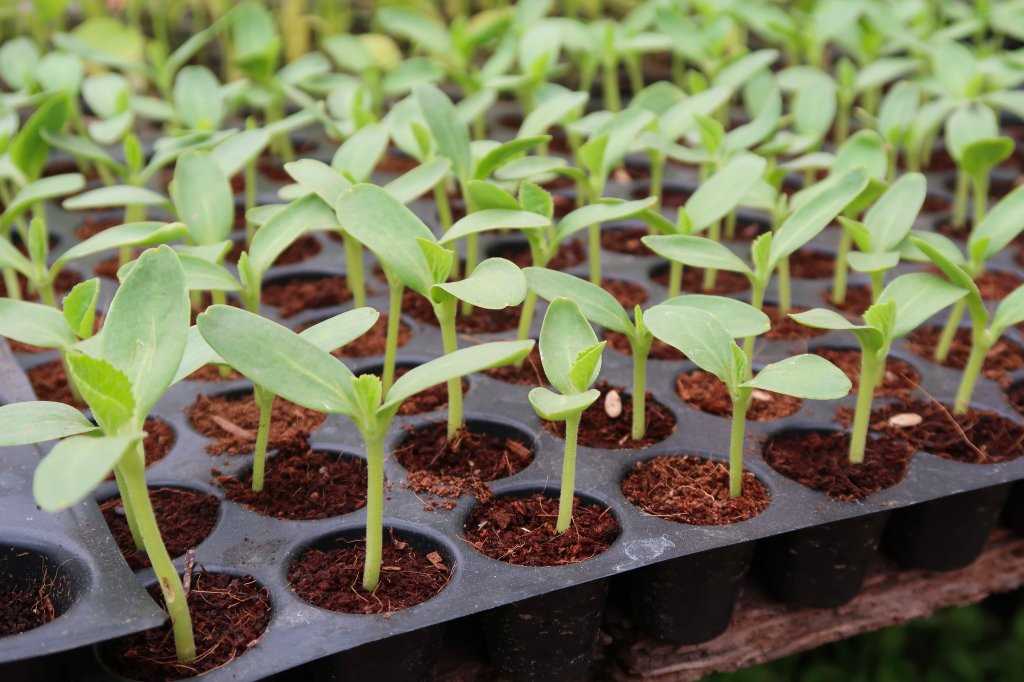
Keep the area around the aubergine plants free from weeds, as weeds can compete with the plants for nutrients and water. Regularly check and remove any weeds that appear near the plants to ensure optimal growth.
Pest and Disease Control
Monitor the aubergine plants for any signs of pests or diseases. Common pests include aphids, whiteflies, and flea beetles. Use organic insecticides or natural pest control methods to keep these pests under control. Diseases such as powdery mildew and bacterial spot can also affect aubergine plants. Use appropriate fungicides or take preventive measures to avoid these diseases.
Harvesting
Aubergines can be harvested when they are firm and glossy. Use a sharp knife or pruning shears to cut the fruit from the plant, leaving a short stem attached. Be careful not to damage the plant or other fruits during the harvesting process. Harvest regularly to encourage continuous fruit production.
Harvesting and Storing Aubergines
Harvesting aubergines at the right time is essential to ensure they have the best flavor and texture. Below are some tips on when and how to harvest these delicious vegetables:
1. Checking for Ripeness
To determine if an aubergine is ripe and ready for harvest, look for the following signs:
- The skin should be glossy and firm.
- The color should be vibrant and even, depending on the variety (usually shades of purple, white, or green).
- When you press your finger against the skin, it should not leave an indentation.
2. Harvesting Technique
When the aubergines meet the ripeness criteria, use a sharp knife or garden shears to cut them from the plant. Leave about an inch of the stem attached to the fruit to minimize damage and prevent decay.
It’s important not to tug or pull the aubergines off the plant, as this can cause damage or even break the stem.
3. Post-Harvest Handling
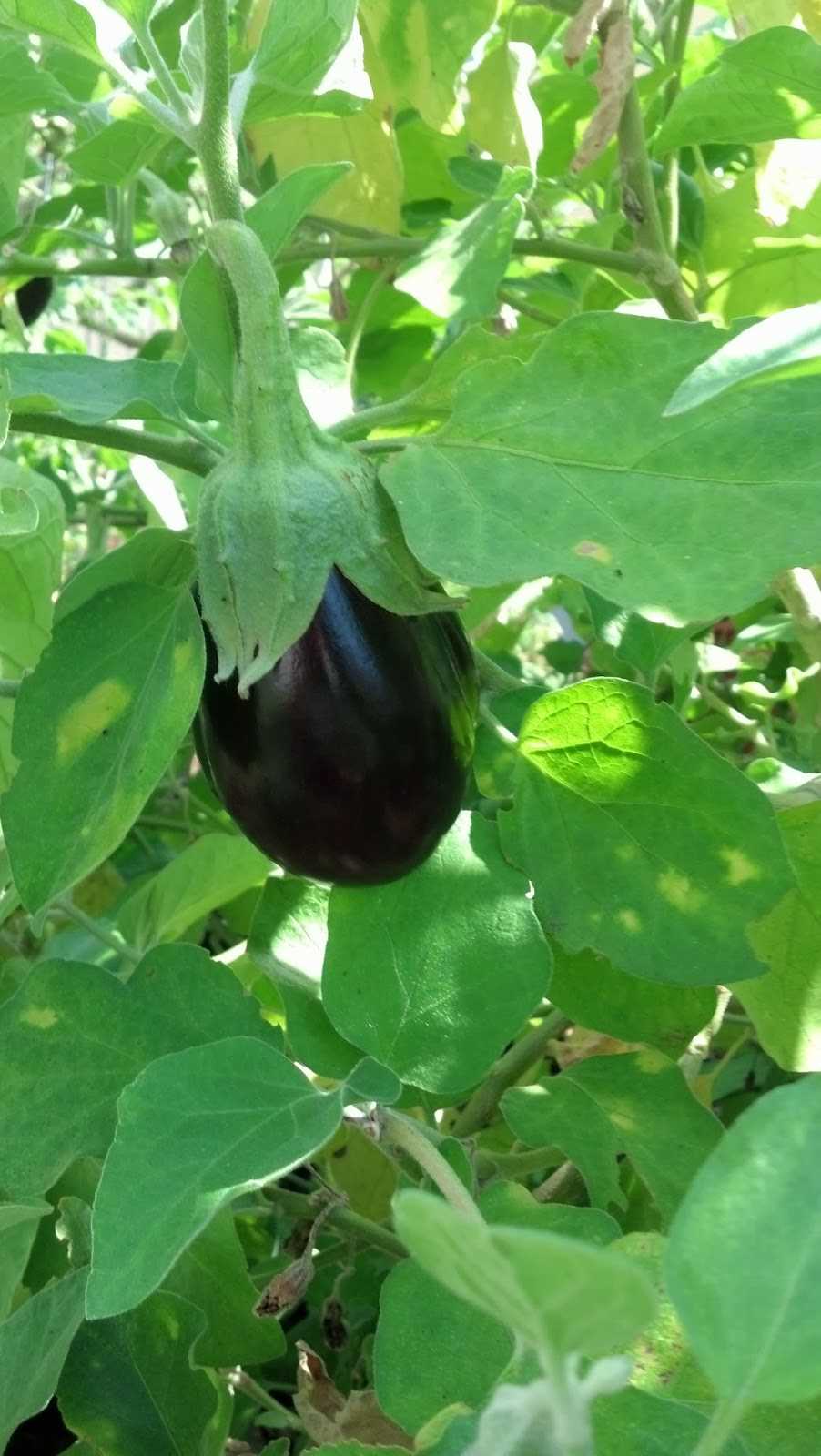
After harvesting, gently clean the aubergines with a soft cloth or sponge to remove any dirt or debris. Avoid washing them with water as it can accelerate spoilage.
Once cleaned, place the aubergines in a single layer in a well-ventilated area to dry. This will help prevent moisture buildup and extend their shelf life.
4. Storing Aubergines
Aubergines are best stored in a cool and dry place, ideally between 45-50°F (7-10°C). If stored at higher temperatures, they may spoil quickly. Avoid keeping them in the refrigerator, as aubergines are sensitive to cold temperatures and can develop a bitter taste if exposed to temperatures below 45°F (7°C).
For longer-term storage, you can also consider preserving aubergines by freezing or canning them. This way, you can enjoy their flavor even after the harvest season ends.
5. Using Ripe Aubergines
Ripe aubergines can be used in a variety of dishes, such as grilled aubergine slices, ratatouille, or baba ganoush. They can also be roasted, sautéed, or stuffed for a delicious meal.
Remember that aubergines taste best when they are harvested and consumed at their peak ripeness, so try to use them as soon as possible after harvest.
By following these harvesting and storing guidelines, you can enjoy the fresh and tasty flavors of aubergines from your vegetable garden for an extended period of time.
“Question-Answer”
How long does it take for aubergine seeds to germinate?
It usually takes around 10 to 14 days for aubergine seeds to germinate.
What is the best time to plant aubergine seeds?
The best time to plant aubergine seeds is in late winter or early spring, when the soil temperature is around 21-27°C.
Can aubergine plants withstand frost?
No, aubergine plants cannot withstand frost. They are tropical plants and cannot survive in cold temperatures.
How often should I water aubergine plants?
Aubergine plants should be watered regularly, keeping the soil consistently moist but not waterlogged. It is important to water them deeply, so the roots receive enough moisture.
Do aubergine plants require full sun?
Yes, aubergine plants require full sun to grow and produce the best quality fruits. They need at least 6-8 hours of direct sunlight daily.
How tall do aubergine plants usually grow?
Aubergine plants typically grow to be around 2-4 feet tall, depending on the variety and growing conditions.







